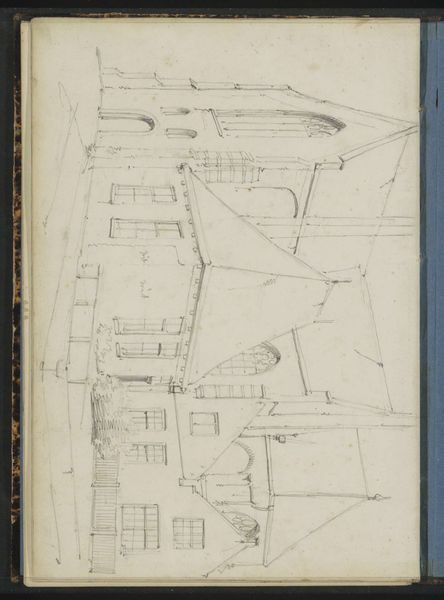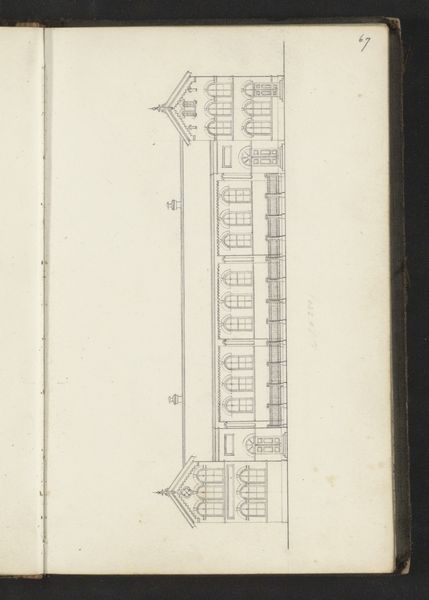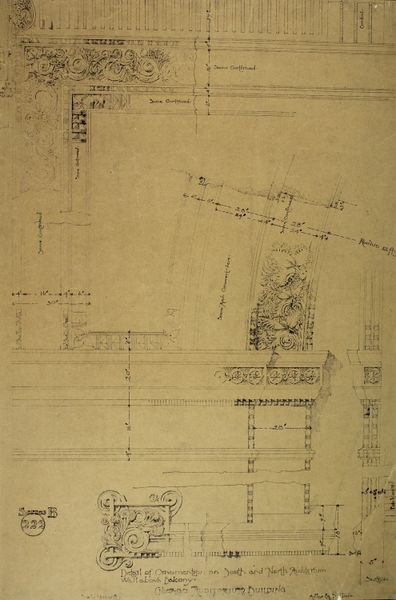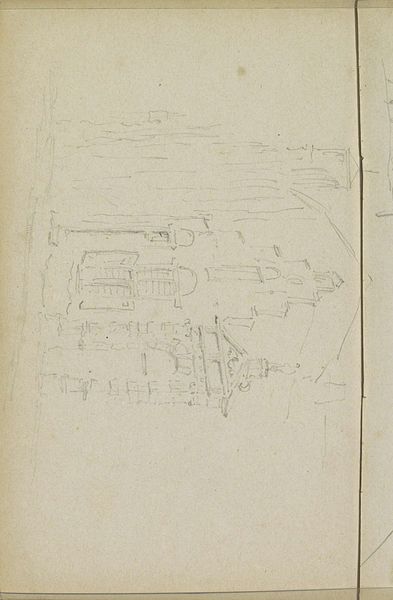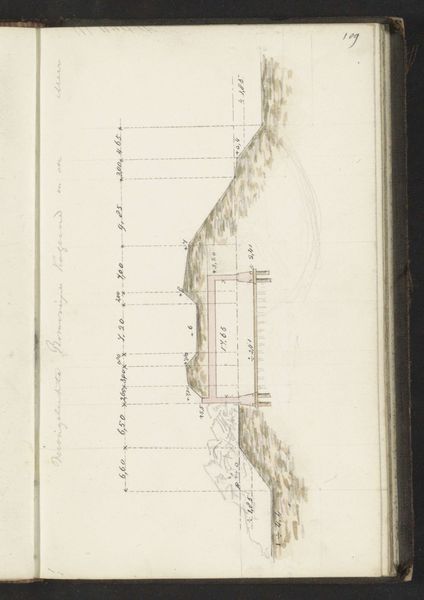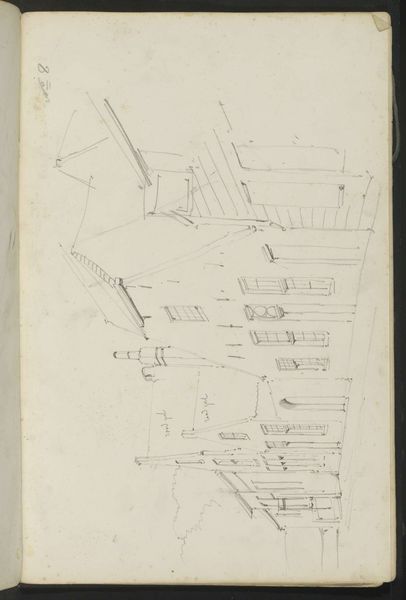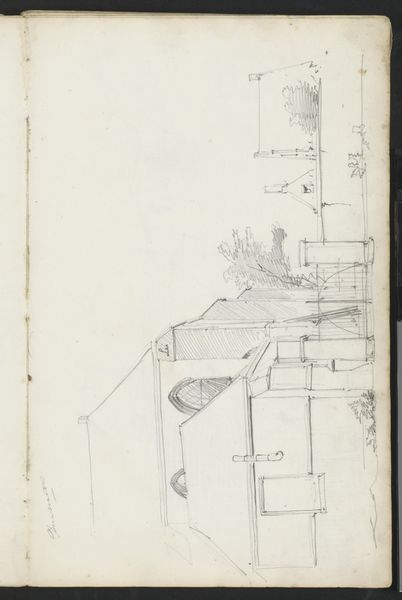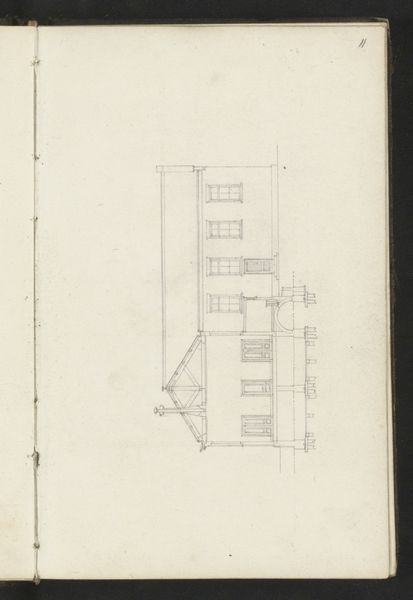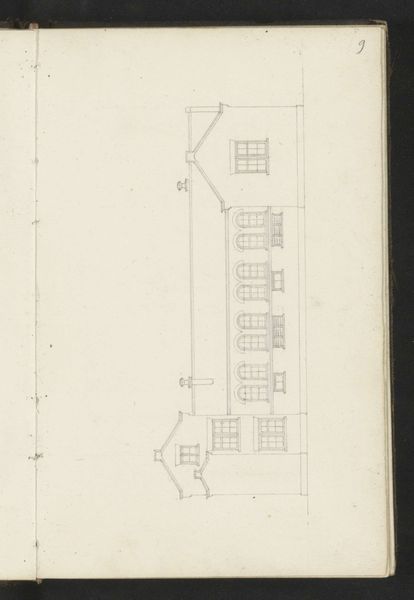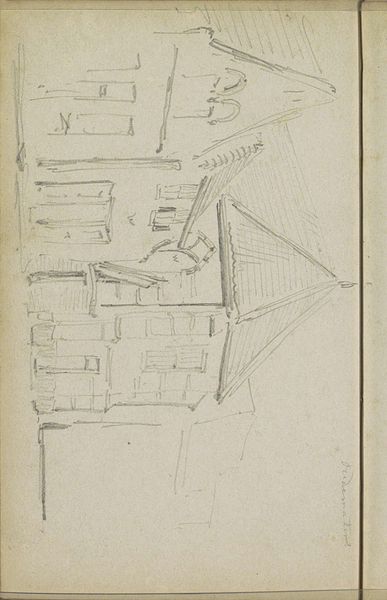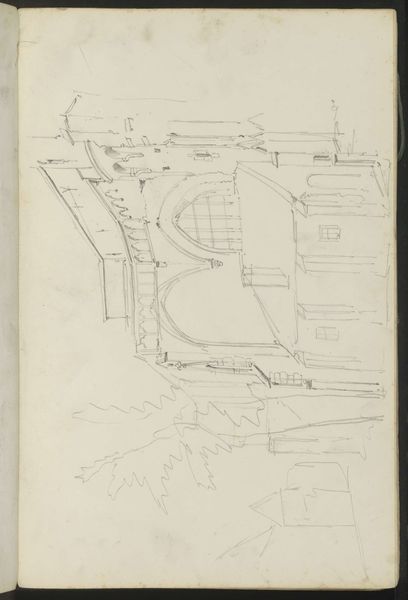
Studier af ornamentik, muligvis efter kalkmaleri. Notater bl.a. farveangivelser 1906 - 1910
0:00
0:00
drawing, paper, pencil
#
drawing
#
paper
#
geometric
#
pencil
#
academic-art
Dimensions: 161 mm (height) x 96 mm (width) (bladmaal)
Curator: This sketch, made by Niels Larsen Stevns between 1906 and 1910, offers a fascinating glimpse into the artist's study of ornamentation, possibly after mural paintings. The medium is simple: pencil on paper. What’s your first reaction? Editor: There's a striking rawness to it. It's a very utilitarian sketch; the medium is minimal, reflecting an active investigation into architectural structures and designs. You can sense a real commitment to the materiality and labor of copying historical works. Curator: Absolutely. This piece invites an intersectional reading. On the surface, it might seem like just an exercise in academic art, meticulously capturing details from another artwork, yet when we consider the period and Stevns' wider body of work, there is clearly an examination of cultural and social power at play through preservation. Editor: The way the sketch reveals the artist's process is what captures my interest. Note the tentative lines, the layering. And there's something undeniably practical in recording notes right on the artwork, with potential indications of color suggesting considerations beyond pure replication. I wonder about the type of pencil and paper. Curator: These ornamental sketches were a necessary step in art making. This also highlights how "high art" relied and often appropriated from historical sources. Stevns’ approach mirrors larger trends of early 20th-century academic art while it raises issues surrounding labor, reproduction, and cultural value. How much artistic interpretation went into these representations? Editor: Good point. The labor of art-making in Stevns’ study comes to the forefront for me. It reveals the often unseen processes and the physical interactions with materials that form our understanding of art history. In academic work of this time period the human labor isn’t valued, because of a desire to separate the work from this part of creation. Curator: So, on one level it is part of a larger historical art canon that can speak to today's discourses around accessibility to cultural works; these were the few who were allowed access to reproduce, reinterpreting what was valuable and what needed preserving. This also informs a very masculine art historical dialogue. Editor: The tactile nature of the piece provides more intimate contact with an object than we would have by the final artistic outcome alone. Considering the history of ornamentation it shows the skill and access required of an academic, which is still fascinating today!
Comments
No comments
Be the first to comment and join the conversation on the ultimate creative platform.

